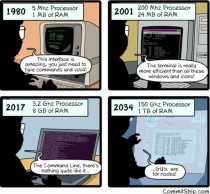Section outline
-
 In this unit we're going to learn what the command-line shell is, how to use it efficiently, and how to perform basic text editing with it.Relevant links:
In this unit we're going to learn what the command-line shell is, how to use it efficiently, and how to perform basic text editing with it.Relevant links:Unit playlist
-------------------
In this video we will learn about executing programs like 'echo' to print strings on the screen, 'cat' to print files, and 'man' to read manuals.
We will also use '&' to run multiple programs at the same time, and use 'Ctrl+c' to quit the currently running program.
Update: when the video was recorded, the university used the "tcsh" shell, but now we are using the "zsh" shell.
This will only make a difference when we get to unit 5.
Optional reading material:
What the command-line shell is, and command structure -
Let's get some important things down before we proceed.
Optional reading material:
A cheatsheet that contains useful shell commands and tricks -
In this video we'll see tricks that help use the shell efficiently like:
- Using the 'tab' button to automatically complete commands.
- Using wildcards like '*' and '?', and multiple option expansions using '{option1, option2, ...}'.
- Using 'history', '!', '!!', and '!$' to reference previous commands and parameters.You may ask - why bother with such "tricks" when we still haven't seen the basics?
Well, these techniques are precisely the reason we want to use the command-line shell!
These tricks help us perform complex operations very quickly. -
We'll learn basic text editing and file manipulation using 'cat', 'touch', 'echo', 'diff', 'Emacs' and 'Vim'.
Optional reading material:
Vim cheat-sheet
Emacs tutorial -
In this nice quiz we'll see some more cool examples of using wildcards, and even learn a few new tricks!
-
Meme for finishing this unit Page
Once you finish this unit, you'll be able to open this page and see a meme!
-